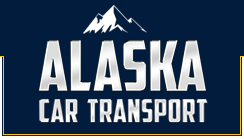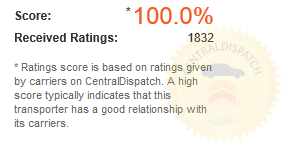Shipping a car to Alaska involves considerations that differ significantly from working with a standard continental auto transport company. With multiple service center ports across Alaska, including Anchorage, Fairbanks, Dutch Harbor, and Kodiak, getting your vehicle safely to the Last Frontier requires specialized knowledge of maritime routes, documentation requirements, and proper preparation.
Understanding Vehicle Transportation Options to Alaska
Before scheduling your Alaska car shipping, it’s helpful to understand the different transportation methods available and how they align with your specific needs. The distance between the lower 48 states and Alaska creates unique logistical requirements for safe and reliable vehicle transport:
Overview of Available Shipping Methods
The geographic separation between Alaska and the continental United States means most vehicles enter the state through one of two primary methods:
- Maritime Transport: The standard method involves shipping on specialized car transport vessels that operate between Seattle and various Alaska ports. These ships follow established sailing schedules with regular service to major Alaska communities.
- Overland Routes: The Alaska Highway provides an alternative for those looking to drive their vehicle or have it transported through Canada, though this option includes additional border requirements and seasonal road limitations.
- Combined Shipping Solutions: Remote Alaska destinations may require multiple transport methods, combining sea transport with local delivery services to reach your final location.
Get all the details about shipping your car from Alaska for a smooth, well-coordinated transport experience with your vehicle.
Factors Affecting Shipping Costs
When obtaining an instant quote for auto shipping to Alaska, several factors will influence the final price:
- Vehicle Dimensions: Larger vehicles like trucks and SUVs generally cost more to ship than standard cars due to the additional space they require during transport.
- Origin Location: The starting point in the continental US significantly impacts pricing, with West Coast origins offering more economical rates than East Coast or Midwest locations.
- Service Type: Open car shipping provides standard protection at economical rates, while enclosed car shipping offers premium protection for high-value or classic vehicles.
- Seasonal Timing: Summer represents the peak Alaska shipping season with potentially higher rates, while winter shipping may offer more competitive pricing despite weather challenges.
- Door vs. Terminal Service: Port-to-port service provides the most economical option, while door-to-port adds convenience for an additional fee.
Seasonal Considerations and Timing
The time of year you choose to ship your vehicle to Alaska has significant implications for both cost and transit experience:
- Summer Season (May-September): Peak shipping season features more frequent sailings, optimal weather conditions, and more predictable transit times. Expect higher demand and potentially higher rates, making advance booking strongly recommended.
- Winter Season (October-April): Off-peak shipping typically offers more competitive rates but may involve extended transit times due to weather conditions in the Gulf of Alaska. Proper vehicle winterization becomes especially important during cold-weather transport.
- Transition Periods: Early fall or late spring can provide a good balance between favorable rates and relatively stable maritime conditions for vehicle transport.
Sea Freight: The Most Common Route for Vehicle Transport
Maritime shipping represents the primary method for transporting vehicles between the continental US and Alaska. Understanding the sea freight process helps car owners make informed decisions when planning their vehicle shipment:
Port-to-Port Vehicle Shipping Services
The standard port-to-port service offers a straightforward and economical approach to Alaska auto transport:
- You deliver your vehicle to the Seattle departure port on your scheduled date
- Professional handlers load your vehicle onto a specialized car transport vessel
- Your vehicle travels via established maritime routes to your chosen Alaska port
- Upon arrival, you complete the necessary documentation and retrieve your vehicle
- This service typically offers the lowest car shipping costs but requires you to handle the first and last legs of transport
For complete convenience, nationwide door-to-port service is available from any location in the lower 48 states, with professional car carriers handling the transportation to the Seattle port before maritime shipping to Alaska.
RORO (Roll-on/Roll-off) vs. Container Shipping
Two distinct methods are available for maritime vehicle transport to Alaska:
- Roll-On/Roll-Off (RORO): The standard method where vehicles are driven directly onto specialized vessels designed for vehicle transport. RORO shipping provides reliable, cost-effective service for standard vehicles that can be safely driven onto and off the transport ship.
- Container Shipping: For maximum protection of high-value, classic, or luxury vehicles, container shipping places your vehicle inside a sealed shipping container for the journey. While this premium option costs more than standard RORO transport, it offers superior protection from maritime elements.
The right choice depends on your vehicle’s value, your protection requirements, and your budget considerations for Alaska vehicle transport.
Key Ports and Transit Times for Alaska Vehicle Transport
Maritime vehicle shipping utilizes established routes between Seattle, Washington and various Alaska ports:
- Anchorage: The primary vehicle shipping destination with approximately 5-6 days transit time from Seattle, with regularly scheduled Wednesday and Saturday departures
- Fairbanks: Requires additional overland transport after arriving in Anchorage, with total transit times of approximately 11-13 days from Seattle
- Kodiak: Served by consistent vessel service with transit times ranging from 7-10 days
- Southeast Alaska Ports: Juneau, Ketchikan, Sitka and other southeast communities maintain regular service with varying transit times
These transit times reflect standard sailing schedules but may vary based on seasonal factors and weather conditions across the Gulf of Alaska. During summer months, secure your preferred shipping dates well in advance due to increased demand.
Land Transportation Through Canada
While maritime shipping represents the standard method for transporting vehicles to Alaska, the Alaska Highway through Canada provides an alternative worth considering for specific situations:
Driving the Alaska Highway: Pros and Cons
The 1,500-mile Alaska Highway journey offers a distinctly different approach to getting your vehicle to Alaska:
- Advantages: Direct control over your vehicle’s journey, opportunity for an iconic North American road trip, and no need for third-party transport coordination.
- Challenges: The extensive route through Canada requires international documentation and preparation. Road quality and weather conditions vary dramatically by season, with winter driving requiring specialized experience and equipment. Most travelers need 5-7 days of driving time, plus accommodation costs, fuel expenses, and additional vehicle wear.
This option appeals primarily to adventurous travelers with flexible schedules who value the journey experience as part of their Alaska relocation.
Professional Auto Transport Services via Land
For those interested in the overland route but not wishing to drive themselves, professional auto transport services can handle the journey:
- Specialized transport carriers maintain regular routes between major continental US cities and Alaska destinations
- Comprehensive insurance coverage provides protection throughout the multi-country journey
- Professional drivers experienced in navigating seasonal road variations and border procedures
- International auto transport expertise handles all documentation and customs requirements
Auto transport companies specializing in this route maintain thorough knowledge of both international shipping regulations and the specific challenges presented by the Alaska Highway’s terrain and conditions.
Required Documentation for Cross-Border Transit
Vehicles traveling through Canada en route to Alaska must have proper documentation:
- Current vehicle registration showing ownership or authorized use
- Proof of insurance valid for Canadian transit
- Driver’s license and passport for all travelers
- Vehicle import/export documentation for Canadian customs
- Detailed inventory of any approved personal effects inside the vehicle
Working with auto transport services familiar with these requirements significantly simplifies the process. Professional transport companies will provide comprehensive documentation guidance before your scheduled departure date.
Preparing Your Vehicle for Alaska Auto Transport
Proper preparation is helpful for hassle-free vehicle shipping to Alaska:
Pre-Transport Vehicle Requirements
Before your scheduled pickup date, complete these important preparation steps:
- Thoroughly wash the exterior to enable accurate condition documentation
- Remove all personal effects not specifically approved and documented for transport
- Verify fuel level is at approximately 1/4 tank (required by maritime regulations)
- Take comprehensive photographs documenting the pre-existing condition
- Secure or remove any loose parts, custom components, or installed equipment
- Check all fluid levels and address any maintenance concerns
- Disable alarm systems or provide clear deactivation instructions
These preparation requirements help confirm compliance with transport regulations while protecting your vehicle during its journey to Alaska.
Vehicle Documentation
Proper documentation safeguards your interests throughout the shipping process:
- Valid vehicle registration showing clear ownership
- Government-issued identification matching the registration name
- Detailed bill of lading and vehicle condition reports
- Lien authorization documents for financed vehicles
Alaska Vehicle Delivery Process
When your vehicle arrives at its Alaska destination port, follow these important steps:
- Perform a detailed inspection before accepting final delivery
- Document any condition changes from the original inspection report
- Verify all mechanical systems function properly at the delivery location
- Complete all required paperwork including delivery receipt
- Begin the Alaska vehicle registration process within the required timeframe
Thorough inspection and documentation at the time of delivery help identify and address any transport-related issues promptly.
Why Choose Alaska Car Transport
Alaska Car Transport specializes in shipping vehicles to and from Alaska, and it has over 30 years of experience navigating the unique challenges of northern auto transport. Our team has developed specific expertise with Alaska port procedures, documentation requirements, and shipping methods to provide reliable service regardless of season or vehicle type.
Our 5-star rated customer service team provides personalized guidance throughout the entire shipping process, from your initial quote to final delivery. We offer both port-to-port and nationwide door-to-port options to meet your specific needs and budget. With regular sailing schedules to all major Alaska ports, including Anchorage, Fairbanks, Juneau, and Ketchikan, plus comprehensive insurance coverage and 24/7 online tracking, your vehicle remains in expert hands from start to finish. For an instant quote on shipping your vehicle to Alaska, call (907) 331-3100 or use our online calculator for immediate pricing tailored to your specific requirements.
Frequently Asked Questions
Is it cheaper to ship a car than drive?
Shipping a car to Alaska is typically more economical than driving when you factor in all expenses involved with the drive option. The total cost of driving includes fuel, accommodations for 5-7 nights, meals, vehicle wear and tear, and potential time off work, which often exceeds the cost of professional auto transport services.
How much of the Alcan highway is paved?
The entire Alaska Highway (Alcan) is now paved from Dawson Creek, British Columbia to Delta Junction, Alaska. While the full 1,387-mile route features paved surfaces, road conditions can vary significantly by season with some sections experiencing frost heaves and construction repairs, particularly during spring and summer months.
What is the average cost to ship a car to Alaska?
The cost to ship a car to Alaska varies based on several key factors that impact the final price. Rates from West Coast origins are generally more economical than shipments originating from the Midwest or East Coast, while vehicle size, service type (open or enclosed transport), seasonal timing, and choosing between port-to-port or door-to-port service all significantly influence the overall car shipping costs.


